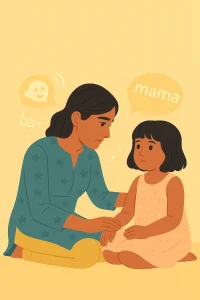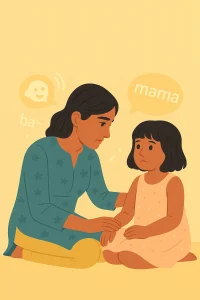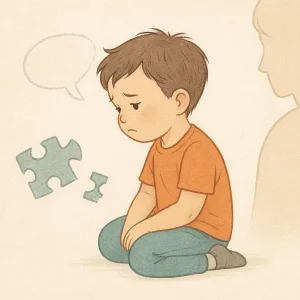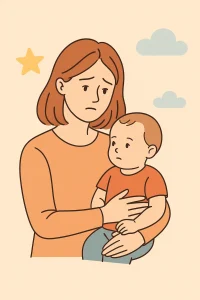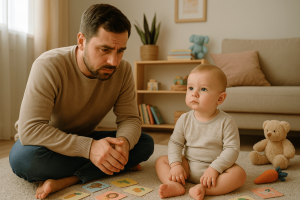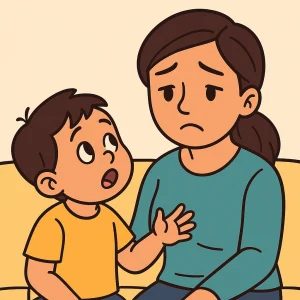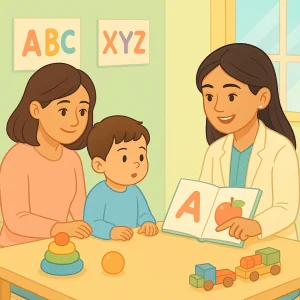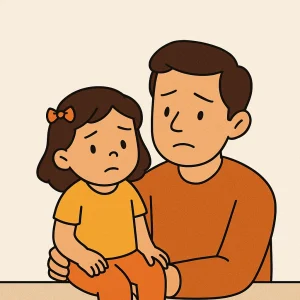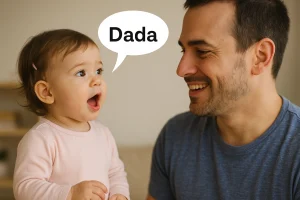Expanding Toddler Vocabulary: A Parent’s Milestone Guide
By Wellness Hub
Last Updated: January 15, 2025
Watching your toddler’s vocabulary expand is a delightful aspect of parenting. As they transition from babbling to forming complete sentences, their ability to express thoughts and interact with the world increases significantly. This crucial phase in their development is driven by curiosity and daily interactions. Understanding and supporting your child’s linguistic growth is key to fostering effective communication skills. In this guide, we’ll explore simple, impactful strategies to help enrich your toddler’s vocabulary, enhancing their learning journey. Each step you take now lays the foundation for their future success in communication.
Understanding Toddler Vocabulary Growth
The journey of language development in children from birth to three years is both fascinating and complex. Initially, infants communicate through cries and coos, but by their first birthday, many begin to utter their first meaningful words. This period is crucial as it sets the foundation for future language skills.
Stages of Language Development:
- Birth to 6 Months: Babies start by listening and responding to surrounding sounds. They engage in vocal play and gradually begin to recognize language patterns.
- 6 to 12 Months: This is when babies often say their first words. They start understanding simple commands and are more responsive to tone and emotion in voices.
- 1 to 2 Years: At this stage, toddlers begin to combine words, forming simple sentences like “more milk.” Their vocabulary rapidly expands, and they start to grasp the names of familiar objects and people.
- 2 to 3 Years: Toddlers now start to use language to express thoughts and feelings, ask questions, and engage in more complex conversations.
Role of Environmental Interaction and Parental Communication:
The environment a child grows up in plays a pivotal role in their language development. Regular interaction with parents, siblings, and other caregivers who speak clearly and engagingly contributes significantly to a child’s vocabulary acquisition. For example, a simple daily routine like describing objects around the house or narrating ongoing activities can immensely boost a child’s word bank.
Parental communication is particularly impactful. When parents speak using a variety of vocabulary and engage in back-and-forth conversations, even with a pre-verbal child, they are setting the stage for language growth. These interactions are not just about word quantity but also about quality and context, which help the child understand the world around them.
Strategies for Expanding Toddler Vocabulary
Helping your toddler expand their vocabulary can be a delightful adventure filled with words and expressions. Here are some engaging strategies to support their language growth:
Daily Conversations
Importance of Rich Vocabulary and Full Sentences:
Engaging your toddler in daily conversations using rich vocabulary and full sentences can significantly enhance their language skills. By hearing new words in context, toddlers not only learn the meaning of words but also how to use them in conversation.
Examples of Conversational Topics and Phrases:
- During Mealtime: “Look, I’m cutting the carrots into small pieces. Can you say ‘carrot’?”
- While Playing: “Let’s build a big tower with your blocks. Can you hand me the red block next?”
- Outdoors: “See the bird in the sky? It’s flying so high! Can you say ‘bird’?” These simple phrases introduce new vocabulary while involving your child in everyday activities.
Reading Together
Benefits of Reading Aloud
Reading aloud to toddlers not only entertains but also educates. It exposes them to different sentence structures, enhancing their grammatical skills and vocabulary.
Tips for Interactive Reading:
- Use different voices for characters to make the story more engaging.
- Ask questions like, “What do you think will happen next?” to involve them in the storytelling process.
- Point to pictures and name things to reinforce word-object associations.
Read more: 6 Amazing Children’s Books for Speech and Language Growth
Using Parentese
Explanation and Effectiveness: Parentese involves speaking in a high-pitched, sing-song voice with clear enunciation and exaggerated facial expressions. Research shows that parentese is more effective than baby talk in boosting language learning because it captures the toddler’s attention and enhances word recognition.
How to Use Parentese Effectively:
- When talking, stretch out vowels and use a cheerful tone.
- Emphasize key words to highlight their importance and meaning.
- Respond to your child’s babbling with parentese to encourage turn-taking in conversations.
Incorporating Songs and Rhymes
Cognitive Benefits: Songs and rhymes enhance phonemic awareness by breaking down words into smaller parts and highlighting the sounds within them. This is crucial for developing reading skills later on.
Suggestions for Songs and Rhymes:
- Classics like “Twinkle, Twinkle, Little Star” or “The Wheels on the Bus” are great for teaching rhythm and vocabulary.
- Make up your own silly rhymes with your child’s name or favorite things to make the experience more personalized and fun.
Explorative Learning
Encouraging Vocabulary Through Real-World Experiences: Taking learning outside the home can provide your toddler with a rich array of new vocabulary. Every outing is a chance to introduce new words.
Ideas for Educational Trips and Activities:
- Visit a zoo or aquarium and talk about each animal. For example, “Look at the elephant, it has a long trunk.”
- At the grocery store, name the fruits and vegetables. “This is a mango. It’s sweet and juicy.”
- A walk in the park can be a mini-lesson on nature and the changing seasons.
Each of these strategies offers a unique way to enrich your toddler’s language environment. Remember, the goal is to make learning fun and interactive, turning everyday moments into opportunities for growth.
Supporting Vocabulary Development at Home
Creating a language-rich environment at home is essential for fostering your toddler’s vocabulary development. Here are some practical tips to help you seamlessly integrate vocabulary building into your everyday activities, making each day a learning adventure for your little one.
Practical Tips for a Language-Rich Environment:
- Label Everything: Use labels on items around the house, like furniture, doors, and toys. This visual aid helps toddlers connect words with their corresponding objects, enhancing their word recognition skills.
- Create a Reading Nook: Set up a comfortable space dedicated to reading. Stock it with a variety of books, including picture books and storybooks, to make reading a regular part of your child’s day. This not only makes reading inviting but also a routine part of your toddler’s playtime.
- Use Technology Wisely: Integrate educational apps or videos that focus on language development, such as those offered by Wellness Hub, which are designed to enrich vocabulary in a fun and interactive way. Remember to balance screen time with plenty of person-to-person interaction and play.
Using Everyday Activities for Vocabulary Expansion:
- Meal Times: Discuss the foods you are eating, describe their colors, textures, and tastes. For example, you might say, “This banana is yellow and sweet. Can you say banana?”
- Getting Dressed: Talk about the clothes your toddler wears. Describe their colors, textures, and functions. For instance, “You have a red shirt on today. Red like an apple!”
- Playtime: Engage in play that involves naming objects, describing actions, and following instructions. For example, during a building block game, you could say, “Let’s put the blue block on top of the green one.”
- Outdoors: Every outing is an opportunity to learn new words. Whether you’re in the backyard, at the park, or on a walk, talk about what you see. “Look at the big tree! It has green leaves.”
- Chores: Involve your toddler in simple household chores while talking through the steps. For example, while sorting laundry, discuss the colors and sizes of the clothes, or while tidying up, name each toy as you put it away.
Daily Activities and Vocabulary Tips
| Activity | Vocabulary Tips |
|---|---|
| Mealtime | Discuss each food item on your toddler’s plate. Use descriptive words for taste (sweet, salty), texture (smooth, crunchy), and temperature (warm, cold). Example: “This carrot is crunchy and sweet. It snaps when we bite it!” |
| Getting Dressed | Talk about each piece of clothing as you help your toddler get dressed. Describe colors, patterns (stripes, polka dots), and their function (shirts keep us warm, hats protect from the sun). Example: “You’re wearing a blue shirt with tiny stars on it. Blue is like the sky!” |
| Playtime | During play, focus on naming objects and describing actions. Use verbs and adjectives to make the interaction more engaging. Example: “Let’s roll the red ball across the floor—it zooms so fast!” |
| Outdoors | Identify and describe everything you see outside. Discuss the weather (sunny, windy), plants (tall trees, blooming flowers), and animals (chirping birds, crawling bugs). Example: “The leaves are so green and the flower smells sweet!” |
| Chores | Involve your toddler in simple chores while explaining what you’re doing using step-by-step language. Describe objects by function and attribute. Example: “We’re sweeping with a broom. The broom helps us clean the floor by brushing away the dust.” |
Conclusion
Boosting your toddler’s vocabulary is a rewarding journey filled with exciting milestones. Remember, every child grows at their own pace, so patience is key. Engage daily through conversations, reading, and playful activities to enrich their language skills. If you’re unsure about their development, don’t hesitate to seek advice from a pediatrician or speech therapist. At Wellness Hub, we’re here to support your parenting adventures with tips and tools that make learning engaging and fun.
Frequently Asked Questions:
1. What are the best ways to help my toddler start talking?
Regular interaction is key. Talk to your toddler throughout the day about what you are doing, read storybooks together, sing nursery rhymes, and engage in playful activities that involve naming objects and describing actions. These activities help familiarize them with words and encourage them to try speaking.
2. How many words should a 2-year-old know?
By the age of 2, most children know about 200-300 words and can put two words together to form phrases like “more milk” or “no bed.” This is just an average, as some toddlers might know more words and others fewer.
3. Is it normal for toddlers to mix up words when they start talking?
Absolutely! As toddlers learn to speak, they often experiment with sounds and may swap words in sentences. This is a normal part of language learning as they figure out how language works.
4. How can I improve my toddler’s vocabulary at home?
Consistently talking to your child using full sentences and clear, descriptive language can significantly boost vocabulary. Reading books that are age-appropriate and playing games that involve verbal instructions will also help enhance their word usage.
5. What is parentese and how does it help toddlers learn to speak?
Parentese is a method of speaking to babies and toddlers characterized by a higher pitch, slower tempo, and exaggerated expressions. It helps hold your child’s attention better than regular adult speech and makes the sounds of words clearer, aiding their language development.
6. Can watching TV help toddlers with vocabulary growth?
Watching TV can introduce new vocabulary, but it should not replace interactive learning. Programs designed for toddlers that focus on language skills can be beneficial if watched in moderation. However, active participation in conversations and play-based learning has a more substantial impact on language development.
7. What should I do if my toddler isn’t talking yet?
It’s important to note that children develop at their own pace; however, if you’re concerned about a delay in speech or language, consulting with a pediatrician or speech-language pathologist can provide you with guidance. They might suggest screenings or early intervention strategies if needed.
8. How often should I read to my toddler?
Reading daily to your toddler is ideal. Regular reading sessions expose them to new vocabulary, help them understand the structure of language, and develop their listening skills. This practice not only boosts their language skills but also enhances their future academic abilities.
9. Are there specific activities that promote better vocabulary in toddlers?
Engaging your toddler in storytelling, singing together, and talking through daily routines are powerful activities. These practices expose them to new words in meaningful contexts, helping them to understand and use new vocabulary actively.
10. What signs indicate my toddler is developing their language skills properly?
Signs of healthy language development include understanding simple instructions, using words frequently, and beginning to combine words into short sentences. If your toddler points to objects when named, responds to questions, and attempts to repeat words they hear, these are good indicators that their language skills are on track.
About the Author:
Rajini Darugupally
M.Sc., Speech-Language Pathologist (9+ years of experience)
Rajini is a passionate and dedicated Speech-Language Pathologist with over 9+ years of experience, specializing in both developmental speech and language disorders in children and rehabilitation in adults. Currently, at Wellness Hub, she thrives in a team environment that values innovation, compassion, and achieving results for their clients.
Book your Free Consultation Today
Parent/Caregiver Info:
Client’s Details:
* Error Message
